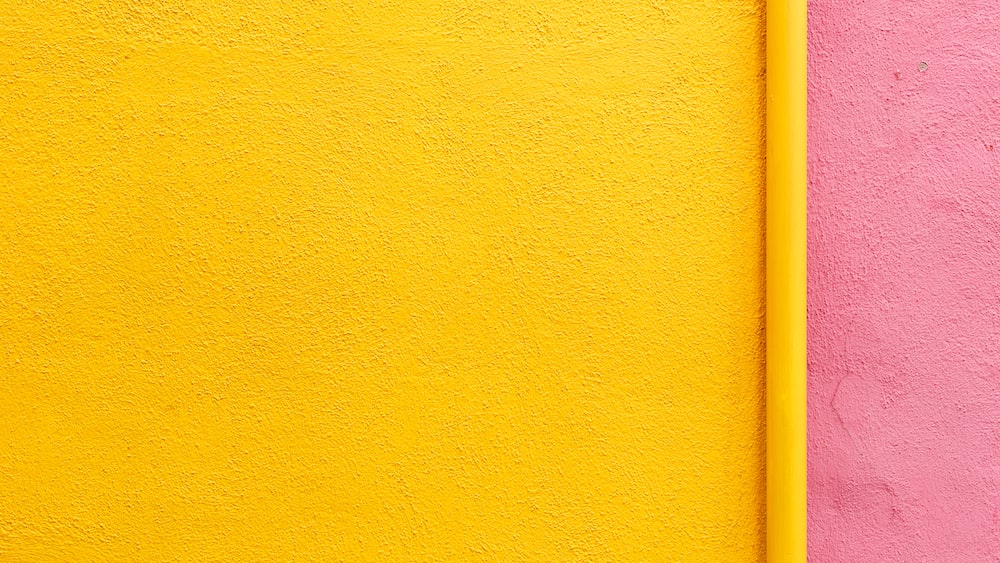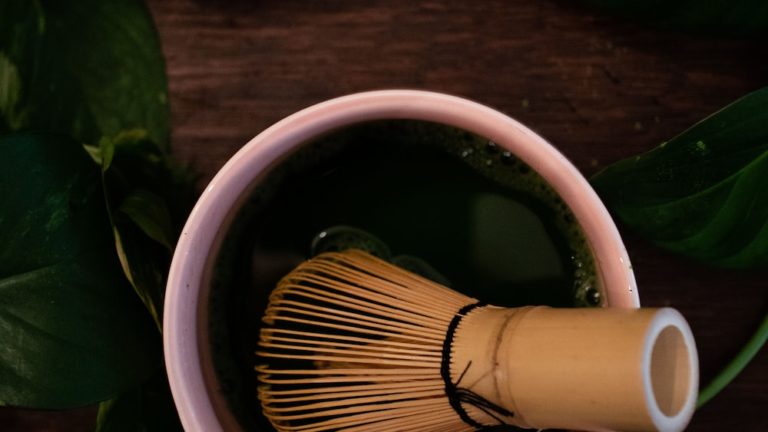Does Yellow Tea Have Caffeine? Uncovering The Truth

Does Yellow Tea Have Caffeine? Uncovering The Truth
Ah, the perennial question that keeps tea aficionados and the sleep-conscious alike up at night (pun intended): does yellow tea have caffeine? Picture this: you’re nestled comfortably in your favorite armchair, the steam from a freshly steeped cup of yellow tea curling lazily toward the ceiling – when the question hits you like a runaway tea trolley. Before you know it, you’re plunging down the rabbit hole of tea leaf chemistry, seeking answers.
Well, chin up, Sherlock! We’re about to embark on a quest for truth in a tale as golden as the tea itself. Not only will we unravel the mysteries of yellow tea’s caffeine content, but we’ll also explore its origins, processing, and even some cheeky brewing tricks to keep your caffeine intake in check. And for those who verge on turning into the Hulk with one too many sips of the energizing elixir – don’t you worry; we’ve got the benefits and side-effects covered too.
Join me in this snug, conversational journey, spiced with a dash of humor, but fear not – we’re grounded in science as sturdy as the finest teapot. So let’s steep ourselves in knowledge because the world of yellow tea is as fascinating as it is delicious and mysterious.
Exploring the Origins and Nature of Yellow Tea
When it comes to tea, not all colors in the rainbow are created equal – and yellow tea is a testament to that. As the chameleon of the tea world, it’s not flaunted like its green and black cousins and often remains under the radar, doing a fabulous job of playing hard to get. But don’t let its demure character fool you; yellow tea has a rich history and a depth of character worth discovering.
What Exactly is Yellow Tea?
So, what’s the deal with yellow tea? If black tea is the strong, dark, and handsome type, and green tea is the fresh-faced hero of health circles – then yellow tea is the intriguing, enigmatic poet lurking in the corner of the tea shop. It’s a rare and luxurious brew, nestled right in-between the realms of green and oolong teas, hinting at sweetness and sophistication.
Yellow tea has been warming the cups and hearts of connoisseurs for centuries, particularly in China, where it is called “Huang Cha.” The tea leaves greet the eye with a palette that ranges from a pale straw color to a golden amber hue. This elegant tea dances on your palate with a mellow, refined taste and an aroma as comforting as your grandma’s hug.

Yellow tea is a rare and luxurious brew with a mellow, refined taste and an aroma as comforting as your grandma’s hug.
The Unique Processing of Yellow Tea Leaves
The secret behind the uniqueness of yellow tea lies in its processing, which is quite the cloak-and-dagger affair that goes beyond the typical tea tale. First, the tea leaves are plucked with precision, because everything elegant starts with the best attire – and in this case, it’s the baby leaves that are the belles of the ball.
After sauntering through the same initial steps as green tea (i.e., wilting and pan-firing to halt the oxidation), yellow tea does the tango with a unique swishing step known as “men huang,” or sealing yellow. During this magical interlude, the leaves are carefully wrapped and allowed to oxidize at just the right slow pace, coaxing out those magnificent golden hues and a subtle sweetness. It’s this meticulous method that truly makes yellow tea the golden child of tea production.
The Caffeine Content in Yellow Tea
Now, does yellow tea have caffeine? Yes, it’s got some zap to it, but think of it as more of a gentle nudge than a boisterous shove out of bed in the morning. Yellow tea is often nestled comfortably in the middle of the caffeine spectrum, but let’s not get ahead of ourselves; the world of tea can be fickle, and those leaves have a few tricks up their sleeves.
How Does Yellow Tea Compare to Other Teas?
When we size up yellow tea against its leafy brethren on the caffeine scale, it paints quite the interesting portrait. On this spectrum:
- We’ve got black tea flexing at the gym in the high-caffeine zone, ready to lift your spirits and your eyelids.
- Green tea sits comfortably in the mid-range, offering a zen-like boost without the jitters.
- White tea whispers at the lower end, a delicate flower in the field of stimulants.
Yellow tea moseys right in with green tea, usually spotting a comparable amount of caffeine. However, just as with people, every leaf is an individual and caffeination can vary. Not all leaves are brewed equal!
Factors Influencing Caffeine Levels in Yellow Tea
Speaking of unpredictable leaves, a multitude of factors can highjack the caffeine express, steering it toward higher or lower content in your cup of yellow tea. There’s quite the guest list, including the time of harvest, age of the plant, and even the ferocity with which the tea plant was grown.
Then, there’s the personal touch – your own brewing style. Like chefs with a family recipe, tea-lovers can tweak the boiling water’s temperature and the steeping time, summoning more or less of that caffeinated spirit. As a result, you could end up with a gentle yellow tea brew that lightly taps your shoulder or one that firm that shakes you awake.

Health Implications of Caffeine in Yellow Tea
The plot thickens when we peer into the teacup of health. While we’ve established that yellow tea does indeed join the ranks of caffeinated teas, it’s the effect of this caffeine that can spell the difference between a kickstart to your day and a desperate plea for the nap kingdom.
Potential Benefits of Caffeine Consumption
Now, imagine caffeine as the well-intentioned friend who is perhaps a bit too eager to help. It can be an ally to our wellbeing when it prances into the scene in yellow tea, offering perks like sharpened focus and boosted metabolism. It’s not just about slapping our brains awake – it’s also throwing confetti at various health benefits. Some studies even link moderate caffeine intake to a reduced risk of certain diseases – we’re talking a lower likelihood of playing host to mean guests like heart disease and diabetes. Just don’t let caffeine hog the limelight; balance is key.
Balance in consuming caffeine is crucial for reaping its benefits without being overwhelmed by its effects.
Understanding the Side Effects of Caffeine
However, tipping the scales can usher in a cast of less-desirable outcomes. Too much caffeine, and you could find yourself jitterbugging with insomnia and anxiety in a caffeine-induced fiesta. Others may get acquainted with irritability or digestive upsets, reminders that moderation in caffeine (as with most performance acts) is the ultimate encore.
Since yellow tea can swing between lower and higher caffeine levels, it’s essential for enthusiasts to know their tolerance. Just keep an eye on your yellow tea intake, and you’ll avoid the caffeine ceremonies that leave you more frazzled than fresh.
Brewing Techniques to Manage Caffeine Intake
Harnessing the perfect brewing technique is like finding that sweet spot on your favorite couch – it just feels right. But besides the comfort of sipping a well-brewed cup, knowing how to finesse your brewing technique can be your secret weapon in managing caffeine intake. Yes, folks, you can actually tango with the tea leaves to dial up or down that jittery jive of caffeine.

Optimal Brewing Temperatures and Times
Picture this: your loose leaf yellow tea is chilling out, waiting to dive into a hot bath. But it’s not just any bath, it’s one with the perfect temperature. Not too hot, lest you scald the delicate leaves; not too cool, or you’ll get a brew duller than a rainy day in April.
For the ideal cup of yellow tea, aim for your water to be about 70-80°C (158-176°F). This gentle warmth coaxes out the exquisite flavors without being a bully and extracting too much caffeine. Now, if you’ve checked your thermometer and the water’s prepped, it’s time to think about timing.
A shorter steep of about 1-3 minutes is your go-to for a less caffeinated cup. If you let those leaves languish any longer, they’ll party too hard, and you’ll end up with more caffeine than you bargained for. It’s a balancing act, the kind that would impress a tightrope walker.
Tips for Reducing Caffeine in Your Cup
Now, my fellow tea aficionados, if you’re aiming to cut down on caffeine but still crave the embrace of a warm yellow tea, take note of these caffeine-dodging maneuvers:
- Opt for larger leaves: The bigger they are, the slower they release their caffeinated goodness. So reach for the loose leaf type over the smaller, broken leaves.
- First rinse is a must: Give those leaves a quick swirl in hot water for about 30 seconds and then bid that water adieu. This sacrificial rinse washes away some of the initial caffeine release.
- Choose the right harvest: Spring-picked teas generally boast lower caffeine levels compared to their summer-picked cousins. It’s all about timing, my dear Watson – the season can be as important as the steep itself!
FAQs
1. How much caffeine is typically found in a cup of yellow tea?
In a typical cup of yellow tea, caffeine content can vary, but generally, you’ll find about 15 to 30 milligrams per 8-ounce serving. The exact amount can be influenced by several factors, including leaf size and brewing time.
2. Can yellow tea be considered a low-caffeine option?
Yellow tea can sometimes be considered a low-caffeine option. When compared to other types, like black or even green tea, yellow tea often has a moderate amount of caffeine, placing it in a happy middle ground.
3. Are there caffeine-free alternatives to yellow tea?
Indeed, there are caffeine-free alternatives to yellow tea. If you’re avoiding caffeine but still yearn for a warm cup, consider herbal infusions like rooibos, chamomile, or peppermint, which naturally contain no caffeine.
4. How does the caffeine in yellow tea affect the body differently than coffee?
The caffeine in yellow tea affects the body more gently than coffee. Unlike the swift kick from a cup of joe, yellow tea offers a more subtle, sustained energy boost. This means no abrupt caffeine crash, just a graceful descent back to your calm, collected self.
Conclusion
As we’ve explored, pulling back the curtain on whether does yellow tea have caffeine reveals a nuanced stage where multiple factors play a role. It’s not a one-act play but rather a complex performance where the type of tea, its preparation, and even its harvest time can affect the caffeine content.
Your personal brewing approach is crucial in controlling your intake. And, voilà, it’s within your power to fine-tune the caffeine levels to match your body’s chorus line or solo performance. The health benefits of yellow tea are certainly compelling, and with the insights we’ve shared, you can now enjoy them without letting caffeine steal the show.
So, there you have it, friends – an end-to-end journey through the world of yellow tea and caffeine. Whether you’re a giddy greenhorn or a seasoned sipper, knowledge is your companion and moderation, your guide. Until next time, may your teas be steeped to perfection and your spirits lifted with each cup.
With a warm hug in a mug,
Zoe






